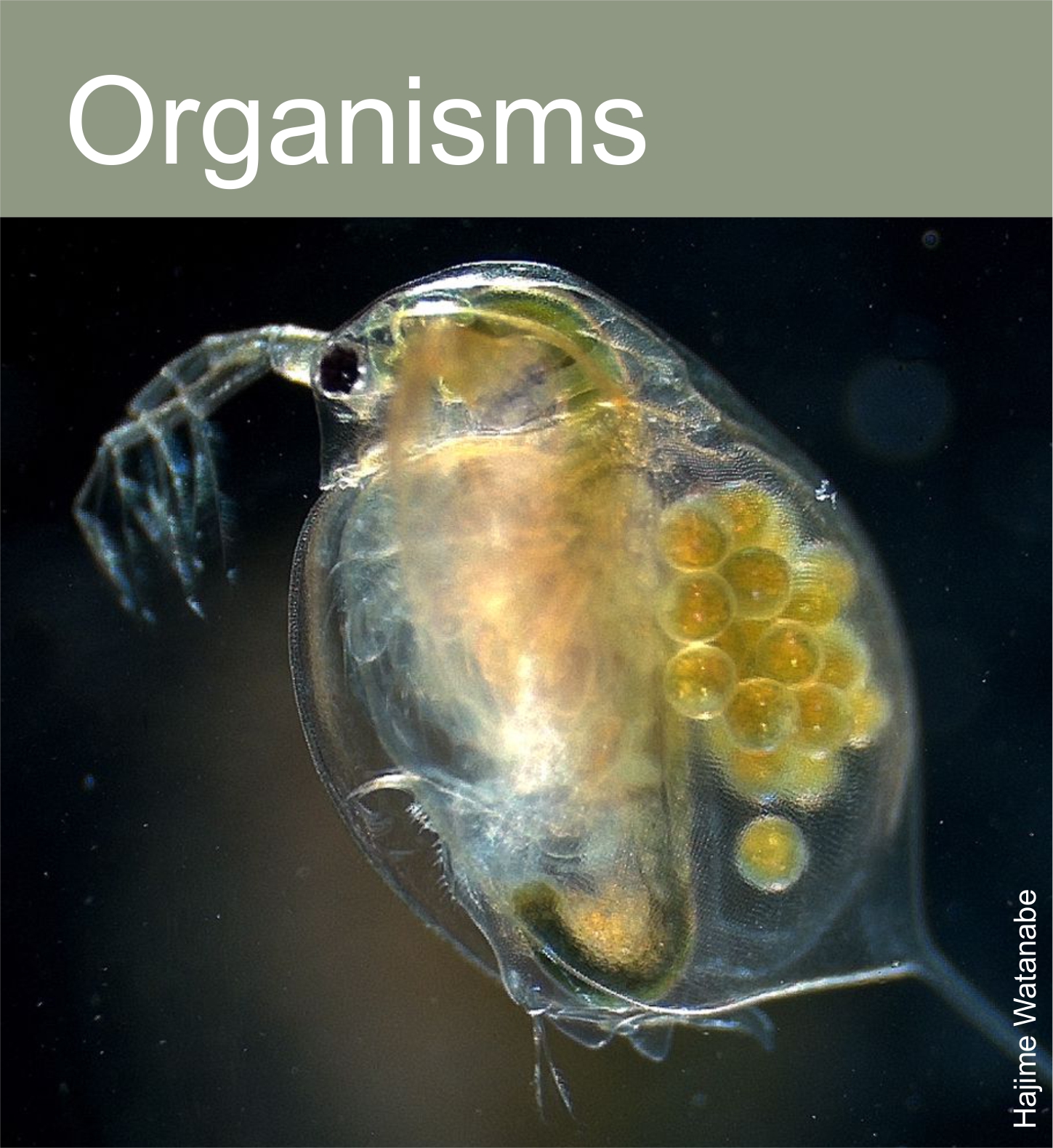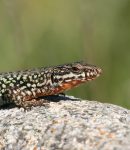
Many male lizards produce secretions that they rub on the ground of their territories. The function of these secretions remains contentious, in particular whether or not they serve as indicators of male fighting ability or suitability as a mate.
A new paper, published in Evolution, suggests that sexual selection on chemical composition is, in fact, quite weak. Headed by recent PhD graduate Hannah MacGregor, and in collaboration with Geoff While and Patrizia d’Ettorre, we analysed the chemical composition of secretions from male lizards from France and Italy. The results confirmed previous work showing that chemical profiles can correlate with male secondary sexual characters. Read more…
New philosophy of biology paper May 25th![]()
Ever wondered why there is such intense disagreement over the evolutionary significance of development, non-genetic forms of inheritance, and niche construction? If so, you may be helped by a recent analysis by Tobias and Heikki Helanterä. The paper, accepted in the premier philosophy of science journal British Journal for the Philosophy of Science, uses niche construction as a case study to demonstrate how the way we think of causality in biological systems shape the structure of evolutionary explanations.
Richard Lewontin famously described evolution by natural selection in terms of three principles: variation, differential fitness and inheritance. Read more…
Ullergroup at Varvet 2017 May 22nd![]()
 The group was well represented at this year’s Göteborgsvarvet, the world’s largest half marathon with over 60,000 runners. Reinder was the first to enter Slottskogsvallen, completing in an impressive 1 h 32 minutes.That is an average speed of 4.23 per km! But the achievement of the year must have been Nathalie. With 1.35.49 she not only broke her personal best by 11 minutes (!) but also finished 225th overall! A cold made Tobias’ start uncertain until the last minute, but in the end he dragged himself around the city, finishing five minutes behind Nathalie. We will be back next year – hopefully with even more group members on the starting line!
The group was well represented at this year’s Göteborgsvarvet, the world’s largest half marathon with over 60,000 runners. Reinder was the first to enter Slottskogsvallen, completing in an impressive 1 h 32 minutes.That is an average speed of 4.23 per km! But the achievement of the year must have been Nathalie. With 1.35.49 she not only broke her personal best by 11 minutes (!) but also finished 225th overall! A cold made Tobias’ start uncertain until the last minute, but in the end he dragged himself around the city, finishing five minutes behind Nathalie. We will be back next year – hopefully with even more group members on the starting line!
Cause and Process at the KLI May 19th![]()
 Evolutionary biologists and philosophers of biology recently gathered at the KLI, an international centre for advanced studies in theoretical biology, to discuss the nature of causation in evolutionary biology. The workshop, organised by Tobias and Kevin Laland, aimed to clarify how the ongoing integration of development and evolution may influence the structure of evolutionary theory and the nature of evolutionary explanations.
Evolutionary biologists and philosophers of biology recently gathered at the KLI, an international centre for advanced studies in theoretical biology, to discuss the nature of causation in evolutionary biology. The workshop, organised by Tobias and Kevin Laland, aimed to clarify how the ongoing integration of development and evolution may influence the structure of evolutionary theory and the nature of evolutionary explanations.
The classic view on causation in evolutionary biology makes a clear distinction between proximate and ultimate causes. Read more…
Quick guide to a turtle’s shell April 27th![]()
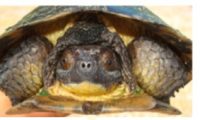 Antonio gives a Quick guide to a turtle’s shell in a recent issue of Current Biology. This 200 million years old innovation, he write, provides shelter from the environment, enhances thermoregulation, protects from predator attacks and even acts a rich reservoir of fats, minerals and water. From the evolutionary perspective, the shell can be seen as an anatomical innovation that has set turtles off along a unique evolutionary trajectory. Read the whole story here.
Antonio gives a Quick guide to a turtle’s shell in a recent issue of Current Biology. This 200 million years old innovation, he write, provides shelter from the environment, enhances thermoregulation, protects from predator attacks and even acts a rich reservoir of fats, minerals and water. From the evolutionary perspective, the shell can be seen as an anatomical innovation that has set turtles off along a unique evolutionary trajectory. Read the whole story here.
Listen to monogamous lizard family affair April 26th![]()
 What can lizard families tell us about our own? Some mate for life and take care of their young. Geoff While speaks on Australian radio about our research on evolution of social complexity in lizards.
What can lizard families tell us about our own? Some mate for life and take care of their young. Geoff While speaks on Australian radio about our research on evolution of social complexity in lizards.
Indiana Yang and the origin of the Tuscans! April 25th![]()
This 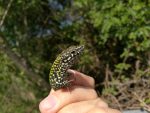 year marked the 6th in our quest for the evolutionary origin and introgressive spread of a sexually selected syndrome in wall lizards. It marked a return to central Italy to fill in the remaining gaps in the map tracing the origins of this phenotype. What has been revealed so far is an intricate history of isolation, evolution, and conquest through interbreeding. Read more about the background to the Italian drama and the fieldwork behind it…
year marked the 6th in our quest for the evolutionary origin and introgressive spread of a sexually selected syndrome in wall lizards. It marked a return to central Italy to fill in the remaining gaps in the map tracing the origins of this phenotype. What has been revealed so far is an intricate history of isolation, evolution, and conquest through interbreeding. Read more about the background to the Italian drama and the fieldwork behind it…
Hannah MacGregor, PhD!! March 31st![]()
As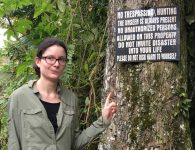 if it was not enough that Hannah’s PhD assessors gave her a clean pass for her thesis on sexual selection and hybridization in wall lizards, she also received the price for Outstanding Performance from the School of Biological Sciences at UTas! Unfortunately, Hannah could not be there to receive the prize in person as she is already off for new adventures, this time learning how to catch guppies. We are not sure what she will do with the prize money, but we hear that cocktails are cheap in Trinidad…
if it was not enough that Hannah’s PhD assessors gave her a clean pass for her thesis on sexual selection and hybridization in wall lizards, she also received the price for Outstanding Performance from the School of Biological Sciences at UTas! Unfortunately, Hannah could not be there to receive the prize in person as she is already off for new adventures, this time learning how to catch guppies. We are not sure what she will do with the prize money, but we hear that cocktails are cheap in Trinidad…
Postdoc position available Feb 23rd![]()
We are looking for a postdoc who wants to work on developmental bias and its evolutionary implications. More information on the position and how to apply can be found here.
What’s new in lizard social evolution? Feb 22nd![]()
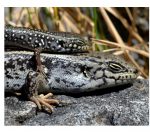 A series of recent papers (Halliwell et al. 2017, Halliwell et al. 2017, Botterill-James et al. 2017) show how good places to live shapes family life in Egernia lizards. Our research – headed by Geoff and his students Ben and Tom – have revealed that the distribution of crevice sites influence group size, polygyny, and the opportunity for sexual selection. This also affects the offspring, because the distribution of adults determine the costs and benefits of dispersal. Read more…
A series of recent papers (Halliwell et al. 2017, Halliwell et al. 2017, Botterill-James et al. 2017) show how good places to live shapes family life in Egernia lizards. Our research – headed by Geoff and his students Ben and Tom – have revealed that the distribution of crevice sites influence group size, polygyny, and the opportunity for sexual selection. This also affects the offspring, because the distribution of adults determine the costs and benefits of dispersal. Read more…
We are very happy to welcome Mara Ruiz Miñano and Théo Ducos to the group. Mara is a new PhD student at the University of Tasmania, supervised by Geoff and Tobias. Mara will join our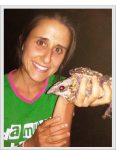
 research project on the causes and consequences of hybridization in wall lizards. This means she will split her time between Lund and Tasmania, with a fair bit in between catching lizards in Italy. Théo will also be working on wall lizards for his MSc project, which continues our collaboration with Patrizia D’Ettorre at the University of Paris 13.
research project on the causes and consequences of hybridization in wall lizards. This means she will split her time between Lund and Tasmania, with a fair bit in between catching lizards in Italy. Théo will also be working on wall lizards for his MSc project, which continues our collaboration with Patrizia D’Ettorre at the University of Paris 13.
Tobias is interviewed by David Sloan Wilson on This View of Life. The piece can also be read on our EES blog, together with recent posts by Massimo Pigliucci, Kim Sterelny, Armin Moczek and others.
New papers
- Chemical communication, sexual selection, and introgression in wall lizards. Evolution, in press
- Niche construction and conceptual change in evolutionary biology. Br J Philos Sci, in press
- Female reproductive investment in response to male phenotype in wall lizards and its implications for introgression. Biol J Linn Soc, in press
- Habitat saturation promotes delayed dispersal in a social reptile. Behav Ecol 2017
- A test of Darwin’s “lop-eared rabbit” hypothesis. J Evol Biol 2016 29:2102-2110
- Accumulation of transposable elements in Hox gene clusters during adaptive radiation of Anolis lizards. Proc R Soc Lond B 2016 283:20161555
- Resource distribution mediates social and mating behavior in a family living lizard. Behav Ecol 2016 28:145-153
- Effects of low-oxygen conditions on embryo growth in the painted turtle, Chrysemys picta. Integr Zool 2016
- Experimental hybrid zones reveal causes and targets of sexual selection upon secondary contact. Funct Ecol 2016
- Habitat structure influences parent-offspring association in a social lizard. Front Ecol Evol 2016 4:96
- Does early-life diet affect longevity? A meta-analysis across experimental studies. Biol Lett 2016 12:20160291
- Loss of genetic diversity and increased embryonic mortality in non-native lizard populations. Mol Ecol 2016 325:390-395
- Low incubation Temperature induces DNA hypo-methylation in lizard brains. J Exp Zool 2016 325:390-395
- Male behaviour drives assortative reproduction during the initial stage of secondary contact in lizards. J Evol Biol 2016 29:1003-1015


